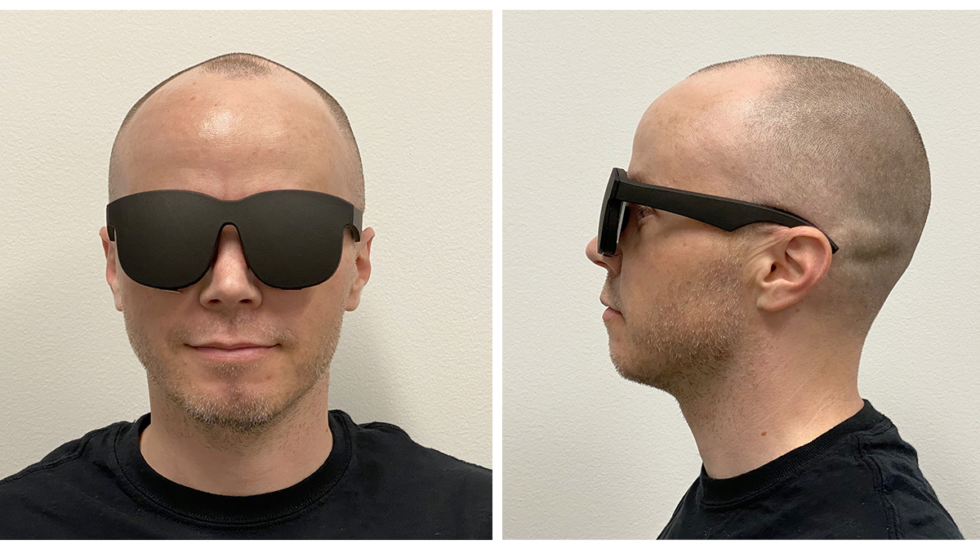VR “sunglasses” are possible with new holographic display technology
-

A model shows off a prototype form factor for a holographic VR display. [credit: Facebook Research ]
For all the advancements in virtual reality technology in recent years, one major factor still holding the space back is the size and relative discomfort of current headset design. Even the most compact and comfortable VR headsets today still resemble something like a cross between ski goggles and a motorcycle helmet, requiring massive headstraps to secure a heavy display that protrudes multiple inches away from the face. Reference designs for "eyeglasses" style VR displays help a bit, but they still look like coke-bottle spectacles from a steampunk cosplay event (and provide a limited field of view, to boot).
Now, researchers at Facebook Reality Labs are using holographic film to create a prototype VR display that looks less like ski goggles and more like lightweight sunglasses. With a total thickness less than 9mm—and without significant compromises on field of view or resolution—these displays could one day make today's bulky VR headset designs completely obsolete.
In the newly published ACM Siggraph paper Holographic Optics for Thin and Lightweight Virtual Reality, researchers Andrew Maimone and Junren Wang detail the optics behind their lightweight prototype. The key to the thinness is a series of flat, polarized films that use a "pancake optics" light-folding technique to reflect the displayed image multiple times in a small space.
Read 8 remaining paragraphs | Comments
from Gaming & Culture – Ars Technica https://ift.tt/2Vv4WAI